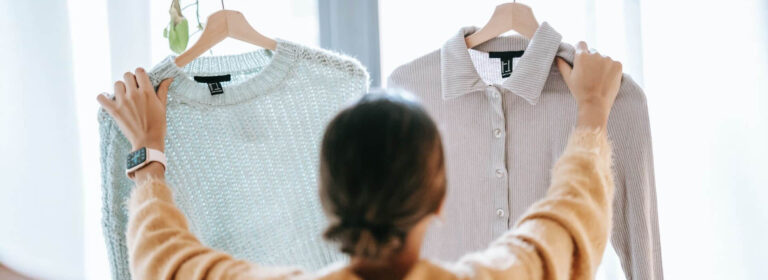As winter approaches and the chill in the air signals its arrival, it’s time to embrace cozy, fashionable warmth. If you share our enthusiasm for keeping warm, you’re going to love this! You should not be concerned if you are unfamiliar with the different types of sweaters. The majority of people have no idea what sweaters are or are called, and even if they have worn one, they often have no idea what it is or how it works. Sweaters come in dozens of styles to accommodate personal preferences for comfort, lifestyle, and fashion. In this article, we’ll go into great detail on the many types of sweaters, providing you with information on the best ones to wear to ward off the cold.
History of Knitted Sweater
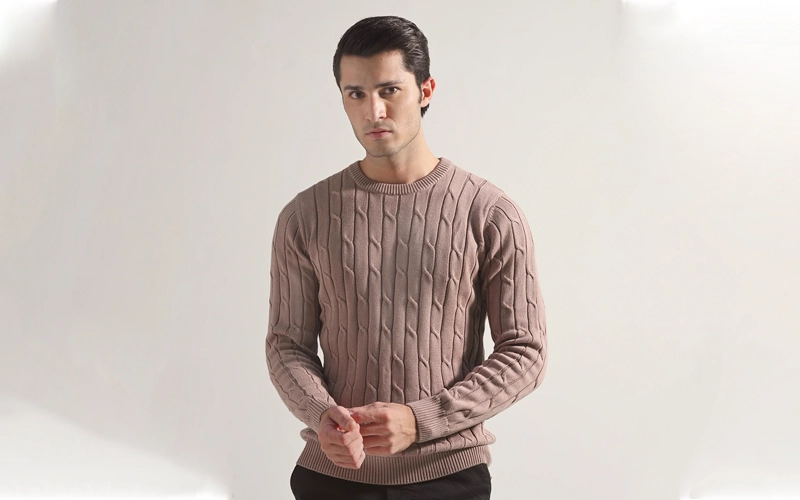
The history of sweaters is rich and dynamic, dating back to the 14th century. Over time, they’ve changed from being used for fishing to being used for sports and many other purposes. It is impossible to overstate their significance in dress codes because they have now been incorporated into opulent mainstream design, frequently fetching thousands of dollars from upscale fashion firms or custom celebrity lines.
What Materials Are Commonly Used in Sweater Production?
Fabric options vary for different types of sweaters, although natural fibers are preferable to synthetic ones. Natural fibers are more durable, feel better, and look better. Cotton and acrylic provide breathability and ease of maintenance; wool and cashmere are renowned for their warmth and tenderness.
Wool

The most popular fabric for sweaters is wool, particularly sheep’s wool. The sweater’s warmth and softness are directly impacted by the wool’s grade. The most prevalent types of wool are Merino, Shetland, and lambswool. The softest sweaters are made from merino. Shetland comes in second, followed by lambswool. The majority of scratchy sweaters are composed of coarse wool. Shetland is probably greater.
Cashmere
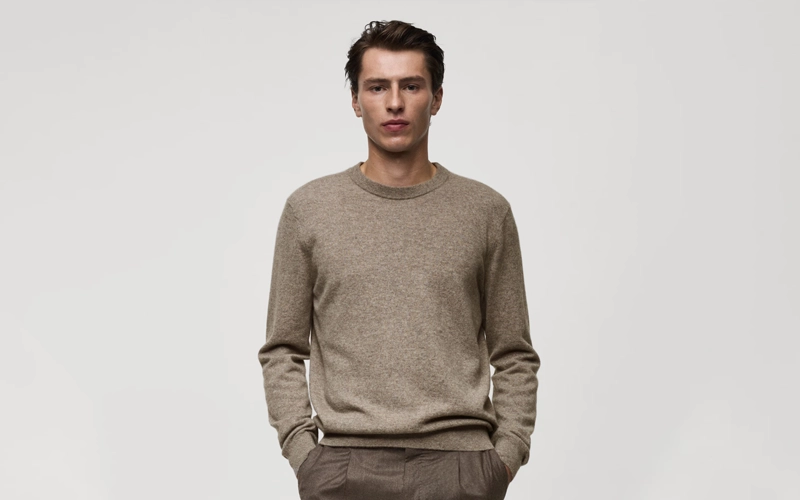
Sheep are not the source of one of the priciest sweater materials. Goats are the source of cashmere instead. The velvety undercoat of a goat is used to make it. In the realm of sweater knitting, it is considered a luxury material. Cashmere is incredibly warm, light, and soft.
Cotton

The next most popular material for sweaters, after wool, is cotton. Despite being soft and light, cotton is cool and long-lasting. Cotton sweaters’ lightweight nature makes them ideal for chilly spring or summer evenings.
Acrylic

Acrylic is a plastic-synthetic fiber that is frequently used as a less expensive substitute for natural materials. Acrylic sweaters are soft, lightweight, and low maintenance; they provide good insulation and are less likely to shrink and wrinkle; blends of acrylic can replicate the look and feel of natural fibers while offering more affordable alternatives.
Silk

There aren’t many sweaters made of 100% silk. Adding silk to sweater knit, on the other hand, increases insulation. Silk’s insulation qualities stem from its softness, durability, and ability to retain heat.
Linen

Lightweight and airy, linen helps you stay cool. A fantastic option for warm climates. The only potential drawback is that linen wrinkles easily.
Which Sweater Types Are Ideal for Layering? 28 Different Styles of Sweaters
Sweaters are available in an array of styles, patterns, and designs. Let’s examine the many sweater types for men and women as well as the newest trends for 2025.
Aran or Fisherman’s Sweater

“Aran Wool Sweater” comes from the island of Aran. It’s a kind of garment with a meaningfully deep knit pattern. These sweaters were initially knit by Aran Island women to keep farmers and fishermen safe amid the island’s frigid conditions. The Aran Sweater manufacturing method guarantees that the final product is worthy of being loved by celebrities worldwide. This sweater’s pattern combinations all have symbolic meanings. As a result of generations of ladies passing it on, it evolved into the prestigious sweater you have most likely seen before. Men’s, women’s, and children’s Aran Wool Sweaters come in a variety of colors and sizes. They are unique in today’s fashion industry since they are sustainable and, with proper care, can last for generations.
Boyfriend Sweater

For the past several years, the boyfriend sweater has been a trendy style that has been trending on social media and online retailers. Because it resembles a sweater that a man has borrowed, it is also referred to as an enormous sweater. To put it another way, it is produced for ladies yet is designed as a men’s sweater. Its function and style are highly distinctive. It is a v-neck, oversized sweater that typically features buttons. Finally, the ribbed bottom extends past the waist. This sweater is comfortable because it is usually roomy and loose.
Button Neck Sweater

The basic button-neck sweater is a wardrobe staple that can be dressed up or down and is appropriate for any situation. This kind of sweater has ribbed cuffs and long sleeves. Wool, cotton, and synthetic textile mixes are among the materials that are used to make button-necks. You can wear them over skirts or pair the cardigan with leggings and a long tunic top.
Cashmere

The silky, opulent fabric of a cashmere sweater is derived from the wool of cashmere goats. Known for being warm and lightweight, it’s a fantastic option for colder climates. When taken good care of, they are comfortable and fashionable, making them a wardrobe staple.
Cape Sweater
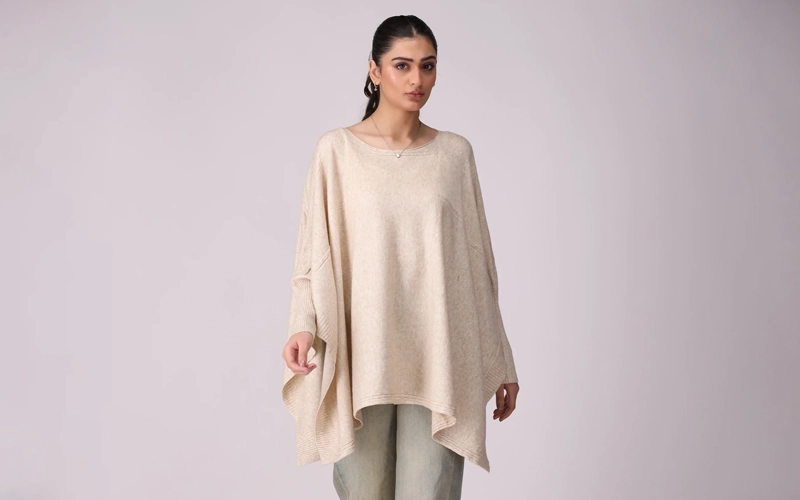
Cape sweaters are similar to traditional capes. They do, however, sometimes pose as old outerwear. They are popular since they can be used for both outdoor and indoor activities. These sweaters differ from many other sweater kinds in that they are designed to be worn as layers because they are not meant to be worn alone. For many garments, different kinds of fabric are preferred. Given that we are discussing sweaters, particularly capes, wool is the most widely recognized fabric to employ to achieve the desired level of warmth.
Cardigans

Cardigans are renowned for their timeless design, which goes well with any ensemble. These open-front versions are easily adjustable and layered thanks to button or belted fastenings. It is available in a range of lengths, from shortcuts to long designs. Because of this, a wide range of body forms can wear the cardigan style. Check out Coogi cardigan sweaters to lift your style.
Cable-Knit Sweater

Cable or cable knit sweaters are a classic style of sweater with a raised textured pattern that looks like twisted rope. Their timeless design makes them versatile for casual and formal wear and popular among all age groups. The texture adds depth and interest to any outfit, making cable sweaters a beloved garment for cooler weather.
Chunky Sweater
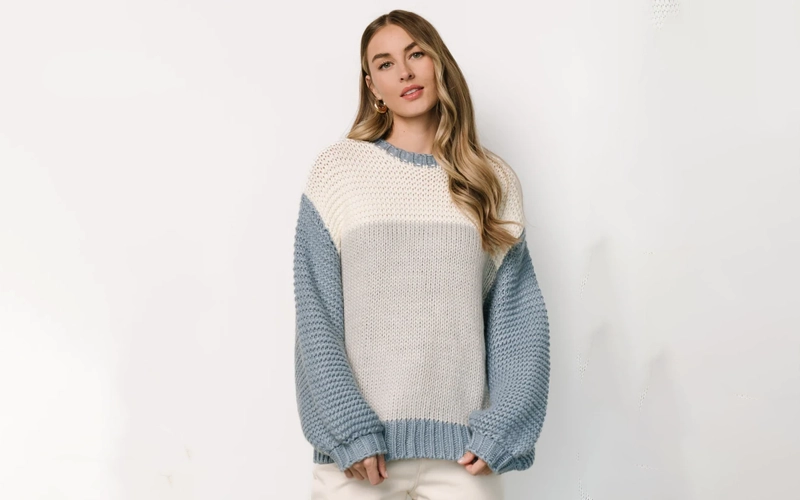
Chunky sweaters are very trendy and a great option. When compared to other sweaters like cardigans or pullovers, this particular knitwear style is notable for its thickness and weight. This kind is ideal for cold climates. These sweaters are expertly crafted to gain their sturdy nature thanks to the chunky yarn and huge needles. To style the thick sweaters, knitters can choose from a basic garter stitch or stitch patterns with amazing texture.
Crew-Neck Sweater

Round-neck sweaters, sometimes known as crewneck sweaters, have a rounded neckline that accentuates the collarbone. This timeless look goes well with a variety of ensembles, making it the ideal option for laid-back events. For a stylish yet casual look, wear it with jeans or effortlessly layer it over a basic t-shirt or dress shirt. The materials used to make the crewneck include synthetic fibers, breathable cotton blends, and soft wool.
Cowl-Neck Sweater

Cowl-neck sweaters give off a modern vibe with their draped neckline, which is reminiscent of a loose turtleneck. Your ensemble gains a contemporary and fashionable dimension with this specific style. Cowl-neck sweaters, which are made of warm and cozy materials like cashmere or wool, are perfect for the winter months. Wearing them with jeans or leggings gives you a toasty, snug appearance that is both comfortable and effortlessly stylish.
Cropped Sweater
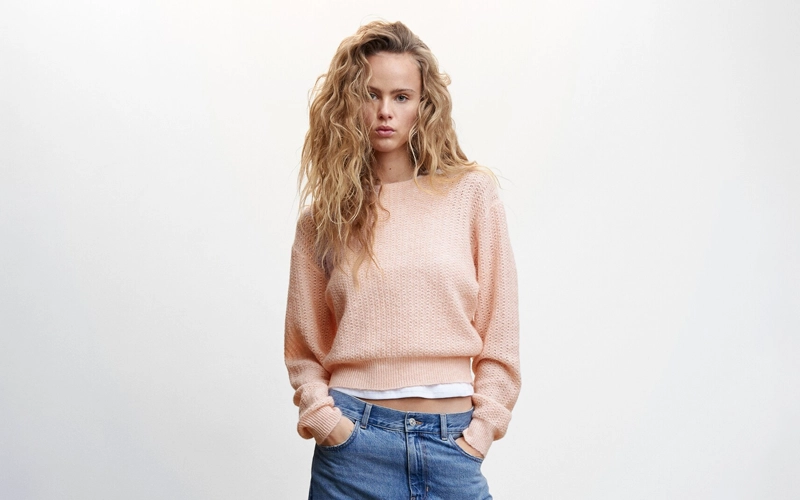
Usually knitted or crocheted, a shrug is a cropped, cardigan-like garment with either long or short sleeves that are cut in one piece with the body. The “aerobic” style, which consists of a cropped sweater worn with a tank or leotard, is iconic to the 1980s. Madonna loved the look so much that she included it in her distinctive style.
Fair Isle Sweater

Savor Fair Isle sweaters are renowned for their elaborate, multi-colored designs and are from the British Isles’ Fair Isle. These classic sweaters are ideal for wearing with jeans or leggings because of their comfortable appeal and blend of geometric designs and traditional themes.
Funnel Neck Sweater

A funnel neck is an uninterrupted extension of the bodice rather than a seam between the sweater and the collar. You seem sleek and elegant since the neck sits upright and doesn’t bend over, and it’s a little wider at the top like a funnel. The standing collar of funnel neck fashions is similar to that of mock neck jumpers. The primary distinction is that funnel necks are wider and slouch more, allowing you to customize the collar to your preferred look.
Full-Zip Sweater

A full-zip sweater has a zipper that runs the whole length of the front, making it simple to put on and take off. This outer layer is offered in casual and athletic styles and is made of a range of materials, including cotton and wool.
Half-Zip Sweaters

The slightly longer zip on a half-zip sweater extends down to about your sternum. In formal contexts, such as the office, the half zip is also appropriate. It will look great underneath soft tailoring and fit comfortably atop a shirt in midweight and lightweight cotton, with the collar exposed, as is the case with many Italian athleisure wear collections.
Mohair Sweater

The long, smooth fiber known as mohair is used to make hats, sweaters, and other fluffy accessories. It’s possible that you know the word but don’t know how it’s truly made, but be careful: As with all textiles made from animals, mohair clothing is made via pain and killing. To make mohair, angora goats are used.
Mock-neck Sweater

Similar to turtlenecks, mock neck sweaters—also called high-neck sweaters or just mock—have a shorter collar that ends just below the chin. Without the added weight of a full turtleneck, this unique cut has a sleek and sophisticated appeal. Since mock neck sweaters complement both professional and casual attire, they are incredibly adaptable. Layer them under a jacket or blazer for a chic combination, or wear them alone to flaunt a laid-back yet sophisticated style.
Off-the-Shoulder Sweater

Wool is the most popular material for sweaters since it is warm and breathable. There are numerous different types of wool, ranging from ordinary to Merino wool (a softer and more costly form). Ordinary wool can seem scratchy at times compared to cashmere, cotton, or synthetic fibers. Wool sweaters are frequently priced similarly to cotton sweaters and are available in a range of sizes, knit patterns, and necklines.
Open Knit Sweater
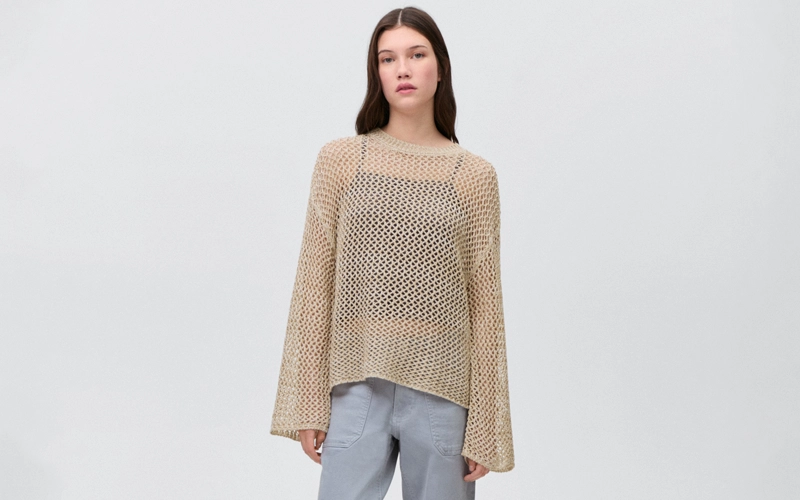
Typically, cardigans are knitted or woven, open-fronted, and buttoned; knotted clothing is referred to as a robe. Another name for knitted clothing with zippers is a cardigan. Clothing that is designed to hang open and lacks buttons or a zipper is a current fashion trend.
Pull-Over Sweater

A pullover is a type of sweatshirt or sweater that is worn over the head. Because it’s cold outside, don’t forget your wool pullover! A pullover is a jacket that is put on by simply pulling it over your head instead of zipping or buttoning it. This is true regardless of the material of any other clothing.
Quarter-Zip Sweater

Quarter-zip sweaters, a knitwear staple with a zipper that extends partially down the front for easy adjustment and breathability, are sporty and versatile. Usually constructed from heavier materials like fleece or wool, they combine functionality and casual flair, making them perfect for cold days or outdoor sports like golf.
Raglan Sweater

One of the sweater styles that may be identified by its sleeve design is the raglan. Designers created a single, long seam that goes across the front or chest and down the length of the arm by attaching the sleeves straight to the sweater’s collar. It’s one of the most comfortable sweaters with a seamless fit because of its overall loose, drapey shape.
Turtle-neck or Roll-neck Sweater
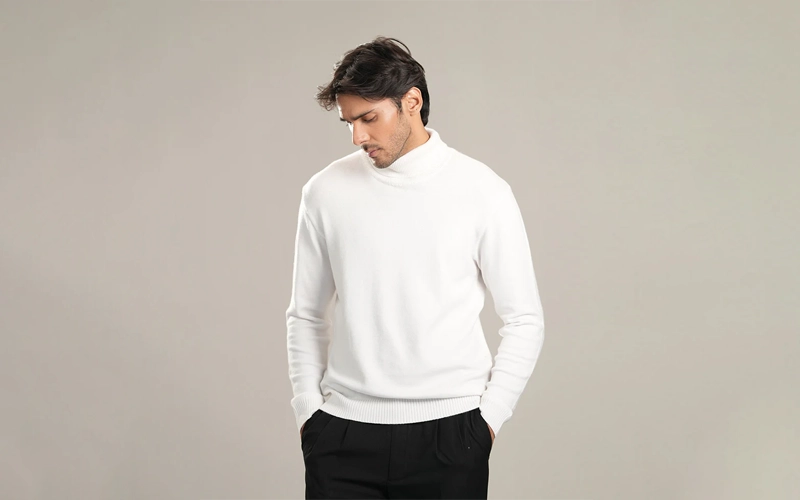
Turtleneck sweaters, also known as roll-neck sweaters, are the traditional choice for cold winter days. These sweaters offer an unparalleled degree of exquisite design and an additional layer of warmth thanks to their high, folded collar that shields the neck. Whether worn alone or layered beneath coats, turtlenecks are a must-have item of apparel for the winter. Select knit or pricey wool sweaters with turtleneck designs and pair them with formal pants for a warm and inviting winter ensemble.
Striped Sweater

The French seamen were the first to wear this renowned design, long before celebrities and other well-known people did. The ‘tricot rayé’ (striped knit) became a standard part of Brittany’s naval uniform in 1858 by a parliamentary act. The timeless Breton Stripe Sweater is one of the staple items that every person has in their closet. After visiting the French coast, Coco Chanel quickly recognized the style, which had been introduced in 1858 as the French Navy’s uniform.
Scoop-Neck Sweater

Your neck and collarbones are typically exposed by the broad, round neckline of a scoop or scooped neck sweater. On the other hand, some have necks that can dip somewhat. There are therefore two basic styles: one with a U-shaped neckline and the other with a semi-circular one. If you want to wear this sweater design in a more formal atmosphere, you can wear a shirt or blouse with a collar underneath.
Shawl Neck Sweater
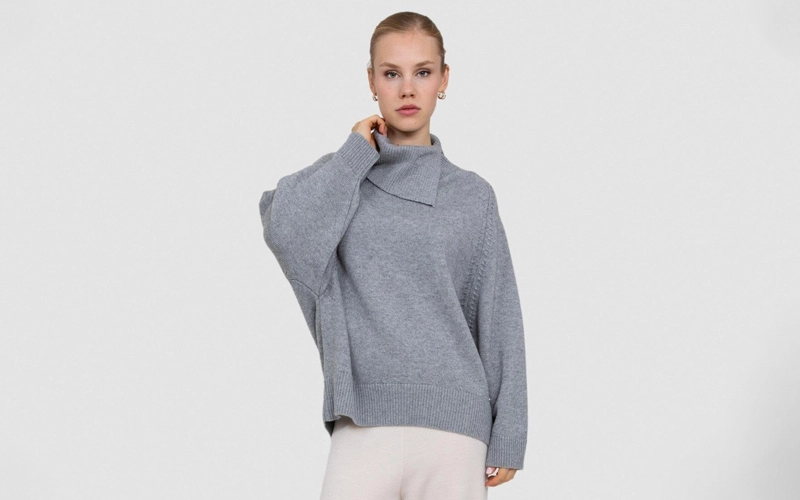
Shawl collar sweaters have a rounded, folded collar that gives their design a more upscale appearance. They combine traditional design with contemporary adaptability, making them appropriate for both formal and informal settings.
V-neck Sweater
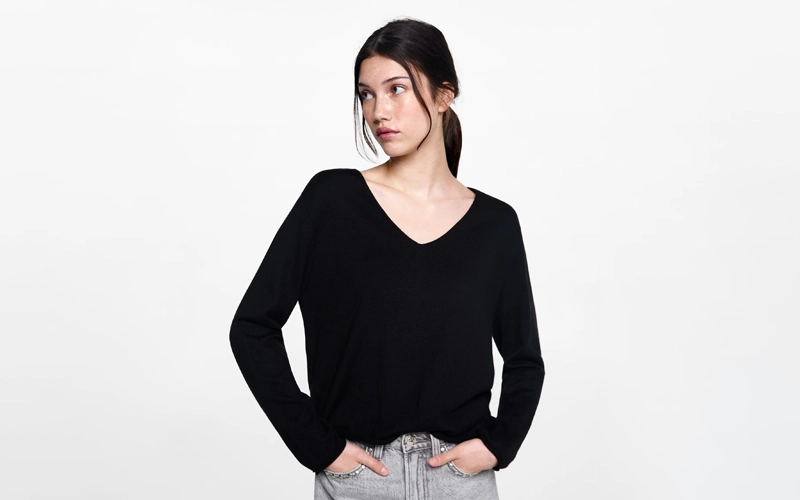
An elegant way to layer over collared shirts or blouses is with a V-neck sweater, a knitwear style that is characterized by its V-shaped neckline. This sweater, which is renowned for its elegant style, looks great with skirts or formal pants. It is therefore a must-have item for designing stylish and elegant ensembles.
Wool Sweater
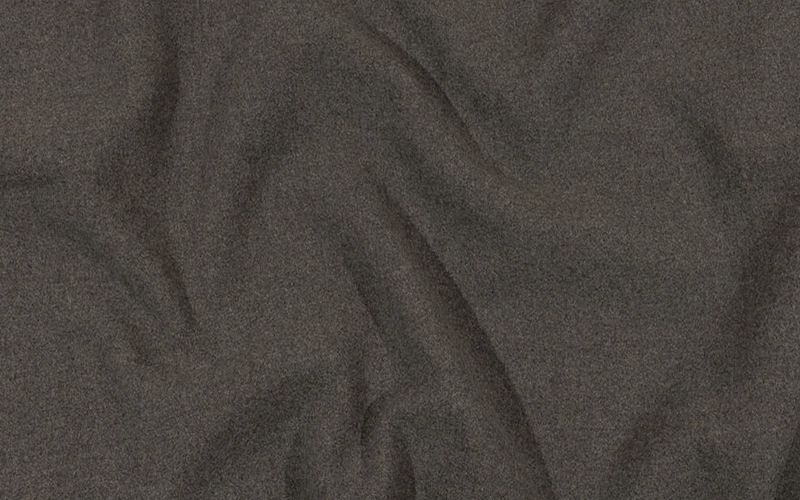
Wool is the most popular material for sweaters since it is warm and breathable. There are numerous different types of wool, ranging from ordinary to Merino wool (a softer and more costly form). Ordinary wool can seem scratchy at times compared to cashmere, cotton, or synthetic fibers. Wool sweaters are frequently priced similarly to cotton sweaters and are available in a range of sizes, knit patterns, and necklines.
How to Wash a Sweater and Take Care of It!
Sweaters won’t require much cleaning if you get high-quality ones and rotate them appropriately. Most sweaters that don’t have stains could benefit from washing at the start and end of the season.
- Alternatively, immediately before and after they are put back into storage. The care tag’s directions are to be followed, which is the best guidance. Only dry clean if the label specifies this.
- It’s advised to wash your sweater by hand if the label indicates “do not dry clean.” Your cashmere items will probably be this. Using cold water when washing by hand is advised.
- To soak the sweater, add enough cold water to a tidy sink or bathtub. Either a capful of dish soap or a sensitive detergent like Persil would do. If you don’t think the stench has been removed, soak the item for around 30 minutes.
- Squeeze the sweater while giving it a gentle cold water rinse; DO NOT RING IT.
- Twisting the item will damage the fibers, changing the sweater forever. Instead, carefully press out the water and soap and mold it back into its original shape.
- Place it flat on a dry towel, then pat it dry with a different one. The drying process should then be left in the air. The fibers won’t pill, shrink, or be destroyed by doing this rather than simply throwing them in the washer and dryer.
FAQs
What is a Sweater?
Sweaters can be made of wool, cotton, or synthetic materials, and they come in a variety of styles. Cotton provides a lighter and more breathable alternative, while wool is the traditional choice, renowned for its excellent insulation.
How Do Different Sweater Styles Affect Your Outfit Choices?
- Boots and leggings: For a warm, outdoor-inspired ensemble, team the sweater with tough boots and leggings.
- Hat and gloves: For a useful, cold-weather ensemble, pair the sweater with a warm hat and gloves.
- Date Night: Dress pants and heels: For a chic, evening-ready appearance, pair the sweater with dress pants and heels.
Final Words
To obtain the most value for your money when buying a sweater, keep an eye out for some important factors. The importance of quality sweaters, particularly for all weather conditions, is something we at Foxedo Sports understand quite well. As comfy and adaptable wardrobe essentials, sweaters may be worn up or down for a variety of events and seasons. Is it a gender thing? Does it have to do with size? Does it have color? Do not be alarmed by these. Being a well-regarded apparel maker, we are in a unique position to provide a guide on anything sweater-related, and we sincerely hope you agree!



